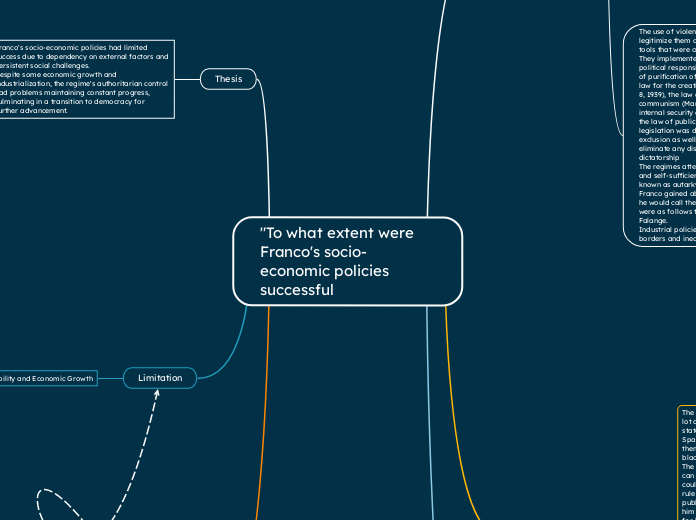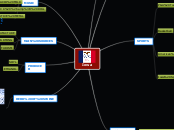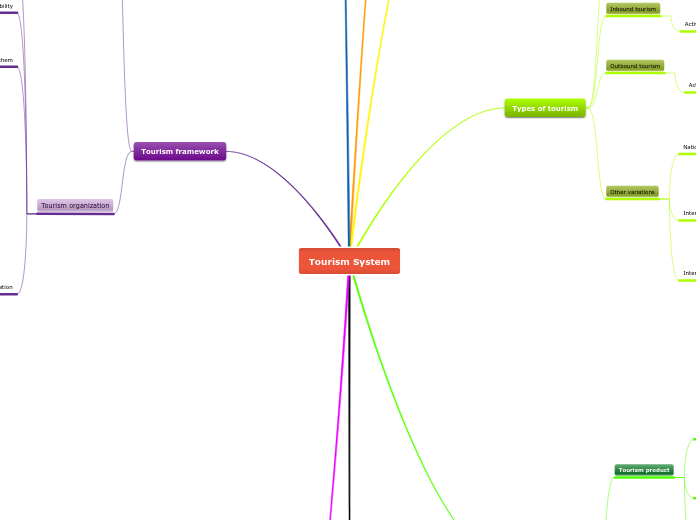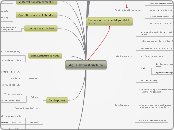Key events and the time period
Post-1975: The legacy of Francoism continues to influence societal structures and values in Spain, as the nation grapples with its authoritarian past while embracing democracy and modernization.
1986: Spain's accession to the European Community signifies a milestone in its integration into European institutions and economies.
1982: The Socialist Party's electoral victory and Felipe González's ascension to Prime Minister signal a new era of economic and social reforms.
1981: A failed military coup on February 23 underscores the fragility of Spain's democratic transition but ultimately reinforces its resilience.
1978: Approval of a new Constitution establishes Spain as a parliamentary monarchy, further solidifying the nation's democratic foundations.
1977: Spain's transition to democracy gains momentum with the legalization of political parties and granting of autonomy to regions, gradually giving way to a democratizing Spain.
1976: Adolfo Suárez becomes Prime Minister, initiating political reforms and paving the way for the legalization of political parties and trade unions.
1975: Franco's death on November 20 marks the end of his dictatorship, ushering in a period of uncertainty as Spain transitions to democracy amidst military resistance and terrorism.
1974: Repression intensifies amid widespread unrest, spurred by events such as the Carnation Revolution in Portugal.
1973: The assassination of Luis Carrero Blanco and rising unrest signal mounting opposition to Francoism.
1970: Heightened labor conflicts and violence, particularly in the Basque Country, challenge the Francoist regime's stability.
1969: Franco names Juan Carlos as his successor, ensuring continuity of the dictatorship's principles and institutions.
1960s: The Franco regime faces increasing challenges as societal shifts stir discontent among the populace.
1940s-1950s: Spain experiences socio-economic changes challenging the Francoist dictatorship's grip on power.
Post-1939: Repression and centralized control mark Francoism, with institutionalized terror and military authorities wielding significant power.
1939-1975: Franco's regime dominates Spain for 40 years, characterized by repression, revenge, and denial of pardon, leaving a deep imprint on the nation's history.
1936-1939: The Spanish Civil War sets the stage for Franco's dictatorship, plunging the nation into turmoil and division.
overview
In 1986, Portugal joined the European Community, marking a significant achievement despite its enduring poverty compared to Western Europe, attribute to Salazar's legacy. Portugal avoided extreme political upheavals, with the Communist Party retaining influence but diminishing overall. In Spain, Franco's authoritarian regime gave way to economic reforms in the late 1950s, leading to a period of rapid change and modernization. Political reforms include the lgalization of the opposition parties, culminating in the 1978 Constitution establishing a parliamentary monarchy. Economic challenges persisted, with the Moncloag Pacts of 1977 aiming to address inflation and unemployment. By 1982, the Socialist Party under Felipe González came to power, implementing economic modernization and steering Spain towards European integration, including NATO membership in 1986.
"To what extent were Franco's socio-economic policies successful
Economic Growth and Transformation / Industrialization and la modernisation
Spain's economy began to steadily rise starting in 1961, with a significant shift from agriculture to industry and services. Spain implemented economic policy reforms that aimed to modernize and liberalize its economy. These reforms included the stabilization of the currency, trade liberalization, and the promotion of foreign investment.
Membership in international organizations like the World Bank, IMF, and GATT, along with reduced tariffs and foreign investments, contributed to economic modernization.
Franco's 'economic miracle' should not be overstated. Spain was not burdened
by the residue of empire and thus faced none of the economic or social costs of de-
colonization. Most of the foreign cash flowing into the country in the Sixties came
not from the export of Spanish-produced goods, but rather from overseas remit-
tances by emigrant Spanish workers or else holiday-makers from northern Eu-
rope: in short, Spain's economic modernization was largely a by-product of other
nations' prosperity. (517 judt)
Spain experienced some economic growth and modernization under Franco's regime, much of it was reliant on external factors such as remittances from migrants workers and tourism, rather than sustainable domestic economic policies.
According to the sentence, Spain did not face the same challenges as other countries in terms of decolonization, which could have hindered its economic progress
Franco's socio-economic policies may not have been as successful or self-sustaining as they may appear at first glance.
Franco's regime claimed credit for economic growth, attributing it to the peace he brought after the Civil War.
Propaganda campaigns, like "Twenty-Five Years of Peace," aimed to reinforce this narrative of prosperity under Franco's rule.
Franco's socio-economic policies garnered widespread support, particularly from conservative factions such as the clergy, landowners, and industrialists.
A 1966 referendum, though marred by irregularities, purportedly showcased overwhelming public backing for Franco's regime.
The death throes of Francoism (Jonas)
Succes of the social policies
The policy of Autarky was a disaster as it caused a lot of famine and put the country in a very bad state. This also led to a lot of protests from the Spaniards and a lot of violence and stealing from them as well increased the use and economy of the black and grey market which is not good for Spain
The success of the violence and repression policies can depend on the outlook however for Franco this could be considered as a success as he was able to rule the public with fear and he destroyed the public sphere making people afraid to go against him or even slightly look in the wrong direction so for him to remain in control this policy was successful
In terms of the social aspect of the industrialization reforms it was not so good as many people who were in a lower class were being exploited and sacrificed which caused tension between and even more inequality between the higher and lower class
The newly opened borders were fantastic as tourists would help influence for Franco to loosen the restrictions and because of that there were new policies which were performed which lessened the dictatorship of Franco and due to this the Public sphere would be healed again and the protests became peaceful and the inequalities in the country were not seen as much as before
Social Consequences
The use of violence and repression. They tried to legitimize them and the legal and administrative tools that were created to carry it out
They implemented policies such as the law of political responsibilities (february 9, 1939), the law of purification of officials (February 10, 1939), the law for the creation of penal colonies (November 8, 1939), the law against freemasonry and communism (March 1, 1940), the law for the internal security of the state (march 29, 1941), and the law of public order (September 30, 1959). This legislation was designed to justify the social exclusion as well as to punish, humiliate, and eliminate any dissent or opposition to the dictatorship
The regimes attempted to make Spain an enclosed and self-sufficient economy which was a policy known as autarky
Franco gained absolute power by relying on what he would call the three pillar and the three pillars were as follows the church, the army, and the Falange.
Industrial policies were formed, newly opened borders and inequality
The use of violence and repression destroyed the public sphere and created a fearful society which started to police itself and retreat to a purely private life.
The repression was viewed in 5 different phases the first was marked by indiscriminate and extensive violence. The second, of great intensity and cruelty, exponentially increased the prison population (1939-41). The third phase which covered the years 1941-43 saw a smaller number of people on death row and in prison population. This was succeded by the five years between 1944 and 1949. Finally, the fifth and final phase began in 1950 which did appear violent at times was reduced due to international context. (a third of the victims of Francoism, some 50,000 people were executed after the end of the civil war)
Women experienced more repression it was more obviously shown and it was more humiliating and public
The policy autarky produced a lot of hunger and misery, which affected many Spaniards but did so in ways that were shaped by politics, geography, and gender.
Combined with the repression, this lead to the most of the protests and resistance in the first twenty years after the end of the war taking the form of what people called the "weapon of the weak." furthermore the protests included breaking the law and the creation of a new market called the grey market for a new form of protest
Through the exploitation and sacrifice of ordinary people Spain was able to boom and the economic growth made spain into a massive consumer society however access to it was very unequal because of the inequality
There was a very big inequality between classes in Spain
After having newly opened borders Spain became a place where many tourists would go. This drove economic growth and the tourists as well prompted social and cultural changes. The tourists would not only consume and give employment to hotels and restaurants they would also live with the Spaniards and publicly exhibit the benefits of freedom loosening the restrictions of the dictatorship. A lot of the protests had now turned peaceful.
Due to the opening of borders new policies arrived which lessened the dictatorship of Franco while the press and publications act (1966) ended prior censorship. Furthermore the organic statue of the national movement (1968), and reforms to the civil code in 1970, 1972, and 1975, reduced the brazen legal discrimination against women.
Social Consequences and Discontent
Economic modernization led to significant social consequences, including widespread labor discontent and demands for collective bargaining and union representation.
Strikes, demonstrations, and demands for reform characterized Spanish society from the late 1960s until Franco's death.
Military and Political Control
Franco's regime maintained control through enforced passive acceptance and de-politicization of the culture.
Political opposition was banned, and formal political rights and procedures were largely symbolic.
Transition to Democracy
Franco's death in 1975 marked the beginning of Spain's transition to democracy, managed from within the regime's ranks.
King Juan Carlos I played a crucial role in rejecting a military coup in 1981 and defending the constitution, solidifying his support for parliamentary rule.
Challenges
Despite economic growth, Spain faced challenges such as lagging infrastructure outside major cities and low per capita income compared to European averages.
The economic modernization was largely a by-product of foreign cash inflows, including remittances from migrants workers and tourism revenue, rather than export-led growth.
Historical economy
Spain's economy had historically been agrarian-based, with limited industrialization compared to other European countries. This historical context meant that the country started its modernization process from a relatively lower base, which posed challenges in catching up with more developed economies.
Modernization limitation
The Spain's economic modernization was fueled by foreign cash inflows, including remittances from migrant workers and revenue from tourism. While these inflows provided a temporary boost to the economy, they also left Spain vulnerable to external shocks and fluctuations in global economic conditions.
Infrastructure development/Long terms devlopement
While major cities experienced significant infrastructure development, rural areas and smaller towns often lagged behind. This infrastructure gap hindered economic development in these regions and contributed to disparities in wealth and opportunity between urban and rural areas.
Despite initial growth, Franco's economic policies led to long-term stagnation, marked by inefficiencies, lack of innovation, and limited international integration.
The regime's reliance on protectionism and isolationism hindered Spain's economic competitiveness and modernization, contributing to its lag behind other European nations.
Limitation
Initial Stability and Economic Growth
Contradictions and Crisis
Despite economic growth, socio-economic changes induced by development policies led to contradictions within the regime.
The regime failed to adapt politically to these changes, resulting in a crisis exacerbated by a succession struggle within Franco's leadership.
Transition to democracy faced challenges due to a lack of democratic experience among the populace and resistance from entrenched elements within the military and political apparatus.
Franco's early years brought a semblance of stability after the Civil War, fostering economic growth through policies like autarky and protectionism.
This stability was partially achieved by suppressing dissent and tightly controlling labor movements, ensuring a conducive environment for industrial development.
Thesis
Franco's socio-economic policies had limited success due to dependency on external factors and persistent social challenges.
Despite some economic growth and industrialization, the regime's authoritarian control had problems maintaining constant progress, culminating in a transition to democracy for further advancement.
SUPPORTING ARGUMENT
Franco's socio-economic policies, particularly during the 1960s, saw some success in terms of economic growth and industrialization. The implementation of policies promoting industrialization and infrastructure development contributed to a period of rapid economic expansion, known as the "Spanish Miracle." Foreign investments, tourism, and remittances from migrants played significant roles in driving this growth. However, the economy remained heavily reliant on external factors, making it vulnerable to external shocks. Moreover, the regime's authoritarian control stifled innovation and entrepreneurship, hindering long-term sustainability. While Franco's policies did lead to short-term economic gains, their dependence on external factors and lack of genuine domestic innovation ultimately limited their success.
COUNTER ARGUMENT
While it is true that Franco's socio-economic policies were criticized for their heavy reliance on external factors and stifling effect on innovation, it's important to acknowledge that these policies did contribute significantly to Spain's economic development during the 1960s. The "Spanish Miracle" brought about rapid industrialization, modernization of infrastructure, and a notable increase in GDP per capita. The government's interventionist approach provided stability and attracted foreign investment, which was crucial for jump-starting the economy after the devastation of the Spanish Civil War.









